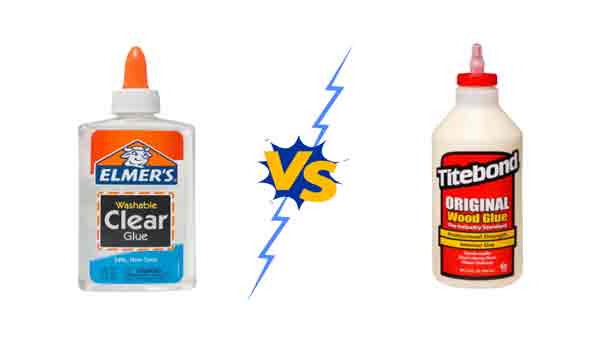HVAC Tape vs Duct Tape: Key Differences and Best Uses

HVAC tape vs duct tape is a popular debate in the tape world. *HVAC (Heating, Ventilation, and Air Conditioning) .
HVAC Aluminum Foil Tape tape is used for Thermal Insulation outer wrapping of the Ducts also tailored for HVAC systems, boasting enhanced durability and resistance to high temperatures.
In contrast, duct tape is versatile but lacks the specialized durability and temperature resistance of HVAC tape. Duct tape featuring a backing made of spun rayon cloth laminated with polyethylene (PE). This backing is coated with a pressure-sensitive adhesive (PSA) composed of rubber
HVAC tape excels in HVAC-specific tasks, while duct tape is a general-purpose adhesive solution.
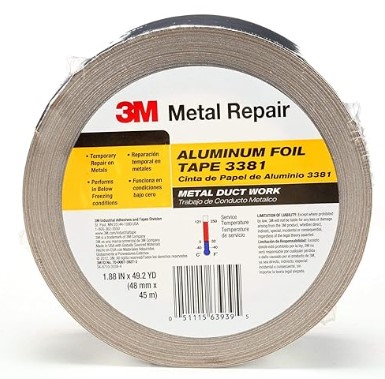
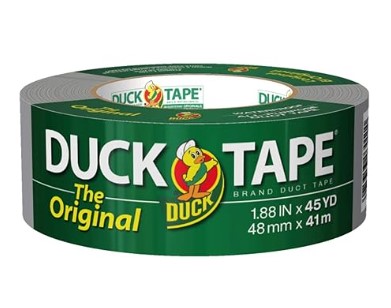
This article will cover every difference between these two tapes.
HVAC Tape Vs Duct Tape
Here’s a comparison table between HVAC tape and duct tape:
| Feature | HVAC Tape | Duct Tape |
| Bonds Instantly | ✔️ | – |
| Temperature Range | -65°F to 600°F | Up to 140°F |
| Shelf Life | 1 year | 6 months |
| UV Resistance | ✔️ | ✔️ |
| Tensile Strength | 30 to 50 lbs | 20.7 MPa |
| Thickness | 4 mil | 10.7 mil |
| Cure Time | Instant | 10 to 12 hrs |
Here’s a Table summarizing the key differences between HVAC tape and duct tape:
| Feature | HVAC Tape | Duct Tape |
| Purpose | Designed for HVAC systems, sealing joints | General-purpose tape for various tasks |
| Material | Aluminum foil with acrylic adhesive | Cloth or mesh backing with rubber adhesive |
| Temperature Resistance | Higher heat resistance | May have lower heat resistance |
| Sealing | Used for airtight seals in ductwork | Versatile but may not provide airtight seals in HVAC applications |
| Reflectivity | Reflects radiant heat in HVAC systems | Not designed for specific reflective properties |
| Conformability | More flexible, conforms to irregular surfaces | May not conform as well to irregular surfaces |
| Durability | Provides a durable and long-lasting seal | May be less durable in certain conditions |
| Applications | HVAC systems, ductwork, radiant heat | General repairs, household tasks, temporary fixes |
What Is HVAC Tape?
HVAC tape is specifically designed to insulate and regulate temperatures and humidity in heating, ventilation, and air conditioning systems. It ensures efficient operation by sealing and securing components, preventing air leaks and optimizing performance.
HVAC Tape Types
1. Foil Tape
Reflective, heat-resistant, durable, seals joints, HVAC applications, radiant barriers, easy to apply, moisture-resistant, non-flammable, versatile.
2. Aluminum Tape
Strong adhesive, lightweight, corrosion-resistant, flexible, HVAC repairs, insulation sealing, high temperature tolerance, waterproof, long-lasting.
3. Vinyl Backing Tape
Flexible, moisture-resistant, electrical insulation, air-tight sealing, low temperature flexibility, durable, UV-resistant, multiple color options, cost-effective.
4. Acrylic Tape
Clear, strong bonding, weather-resistant, UV protection, versatile applications, non-yellowing, high strength, good initial tack, long shelf life.
5. Rubber Resin Tape
Elastic, high adhesive strength, good conformability, insulation purposes, moisture sealing, shock absorption, outdoor use, tear-resistant, chemical resistance.
What Is HVAC Tape Used For?
- Sealing joints in heating, ventilation, and air conditioning systems.
- Securing and insulating ductwork.
- Repairing minor leaks and gaps in HVAC systems.
- Providing airtight seals to maintain system efficiency.
- Resistant to temperature changes and moisture.
- Essential for ensuring optimal HVAC performance and energy savings.
Why Use HVAC Tape?
HVAC tape is essential for sealing, insulating, and securing joints and connections in heating, ventilation, and air conditioning systems. It prevents air leaks, ensures efficient system performance, and enhances energy savings.
Properly applied tape also helps maintain indoor air quality by preventing contaminants from entering the system.

Read More About Gorilla Tape Vs Flex Tape: Which One Is Right For You
What Type To Use On Hvac?
When selecting a type for HVAC systems, consider energy efficiency, system compatibility, and local climate. Common types include split systems for separate heating and cooling units, packaged units for all-in-one solutions, and ductless mini-splits for individual room control.
Is HVAC Tape Heat Resistant?
HVAC tape typically withstands temperatures up to 600°F, making it heat-resistant and suitable for various heating, ventilation, and air conditioning applications.
Is HVAC Tape Safe?
HVAC tape is specifically designed for heating, ventilation, and air conditioning systems. When used correctly, it’s safe and effective for sealing, insulating, and repairing HVAC components.
Is HVAC Tape Necessary?
HVAC tape is essential for sealing joints, preventing air leaks, and ensuring efficient heating, ventilation, and air conditioning systems. Proper application enhances system performance and energy efficiency.
What Is HVAC Tape Made Of?
HVAC tape is typically made of aluminum, foil, or fiberglass materials. These tapes are designed to be heat-resistant and to provide airtight seals for heating, ventilation, and air conditioning systems.
Is HVAC Tape Permanent?
HVAC tape offers a strong bond for HVAC applications. While designed for durability, its permanence can vary depending on conditions and usage. Always follow manufacturer guidelines.
How Long Does HVAC Tape Last?
HVAC tape typically lasts up to 1 year, depending on environmental conditions and usage. Regular inspection and maintenance can extend its lifespan.
What Is Metal HVAC Tape Called?
Metal HVAC tape is commonly referred to as “foil tape.” It is specifically designed for heating, ventilation, and air conditioning (HVAC) applications due to its heat resistance and sealing properties.
Is HVAC Tape Aluminum?
No, HVAC tape is typically made of foil-faced paper or plastic, not pure aluminum. It’s designed for sealing, patching, and insulating heating, ventilation, and air conditioning systems.
What Type Of Metal Is Hvac?
HVAC systems often utilize galvanized steel and aluminum components. These metals provide durability, corrosion resistance, and efficient heat transfer, essential for heating, ventilation, and air conditioning applications.
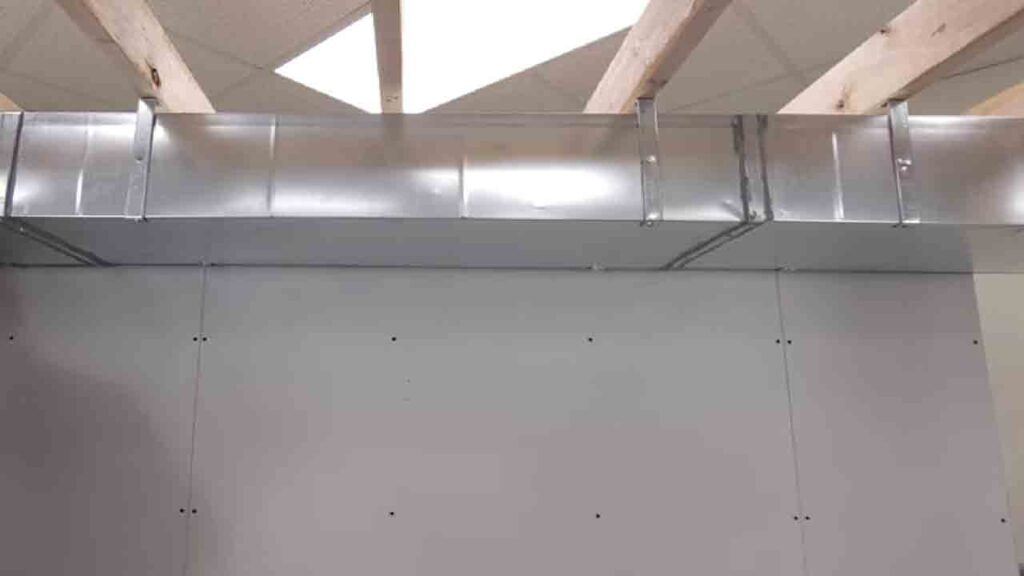
Is HVAC Tape Waterproof?
Yes, HVAC tape is designed to be waterproof, ensuring it can effectively seal and insulate heating, ventilation, and air conditioning systems from moisture and other environmental factors.
What Is The Temperature Rating Of HVAC Tape?
The temperature rating of HVAC tape is typically around 600°F, making it suitable for high-temperature applications in heating, ventilation, and air conditioning systems.
Can I Use Electrical Tape For HVAC?
Using electrical tape for HVAC is not recommended. It may not withstand the temperature fluctuations and conditions typical in HVAC applications, potentially leading to inefficiencies or safety risks.
Is Duct Tape For HVAC?
Duct tape is not designed for HVAC use due to its inability to handle extreme temperature changes in heating, ventilation, and air conditioning systems.
What Is A Class 1 Duct?
A Class 1 duct is a type of ductwork system that requires materials with a flame spread rating not exceeding 25, indicating low flammability and enhanced safety standards.
Why Use Aluminum Tape?
Aluminum tape is used for sealing, patching, and repairing metal surfaces. It offers heat reflection, moisture resistance, and is durable, making it ideal for various industrial and household applications.
What Is HVAC Ductwork?
HVAC ductwork is a system of channels or pipes that distribute heated or cooled air throughout buildings. It ensures efficient airflow, optimizing temperature control and indoor air quality.
What Is Duct Used For HVAC?
Duct in HVAC systems serves to deliver conditioned air to spaces and remove stale or heated air. It ensures efficient air distribution throughout buildings, optimizing comfort and energy usage.
What Is The Full Meaning Of Hvac?
HVAC stands for Heating, Ventilation, and Air Conditioning. It refers to systems used to provide thermal comfort and maintain indoor air quality in buildings and vehicles.
How Are HVAC Ducts Connected?
HVAC ducts are connected using joints, seams, and fasteners like screws or rivets. Proper sealing ensures efficient airflow, while connectors such as elbows and reducers accommodate changes in duct direction or size.
How Do You Remove HVAC Tape?
Here’s a general guide on how to remove HVAC tape:
1. Peeling by Hand
Start by attempting to peel off the tape by hand. Sometimes, if the tape is old or not applied firmly, it might come off easily.
2. Use a Heat Source
If the tape is stubborn and doesn’t come off easily, you can use a heat source to soften the adhesive.
3. Adhesive Remove
If there’s adhesive residue left on the surface after removing the tape, you can use an adhesive remover. Apply the adhesive remover and let it sit for a few minutes. Then, scrub the area gently with a soft cloth or brush until the residue is gone.
4. Clean the Surface
Once you’ve removed the tape and adhesive residue, clean the surface with a mild detergent and water to remove any remaining residue or dirt
HVAC Tape Vs Foil Tape
HVAC tape is specifically designed for sealing and repairing heating, ventilation, and air conditioning systems. It is made with a durable cloth or mesh backing and a strong adhesive. Foil tape, on the other hand, is primarily used for sealing and insulating applications involving metal surfaces due to its reflective properties.
HVAC Tape Vs Mastic Tape
Mastic tape is more durable but can be challenging to work with. Foil tape, while easier to use, has a tendency to fail faster. The choice between HVAC tape and mastic tape depends on the specific requirements of the application, balancing ease of use with long-term durability
How to Choose the Right HVAC Tape
Here are some factors to consider when choosing the right HVAC tape:
1. Type of Tape
- Foam Tape: Used primarily for insulating air ducts and sealing gaps.
- Aluminum Foil Tape: Ideal for joining and sealing aluminum-backed or fibrous insulation, especially in HVAC ductwork.
2. Adhesive Strength
Ensure the tape you choose has strong adhesive properties, especially if you’re working in environments with temperature fluctuations.
3. Temperature Range
Consider the temperature extremes that the tape will be exposed to. Some tapes are designed to withstand higher temperatures, which is essential for HVAC applications.
4. Moisture Resistance
In humid environments, it’s crucial to choose a tape that is resistant to moisture to prevent it from losing its adhesive properties.
5. Flexibility
The tape should be flexible enough to conform to irregular shapes and surfaces, ensuring a tight seal.
6. Thickness
Thicker tapes generally offer better durability and insulation properties. However, ensure that the tape’s thickness is suitable for your specific application.
7. Compatibility
Ensure that the tape is compatible with the materials you’re working with, such as metal, insulation, or other HVAC components.
8. UV Resistance
If the tape will be exposed to sunlight, consider UV-resistant options to prevent degradation over time.
9. Cost
While cost is a factor, prioritize quality and suitability for your specific application over price alone.
Duct Tape Meaning: Why Is It Called Duct Tape?
Duct tape as we know it today originated during World War II. The U.S. military needed a strong, durable tape to keep moisture out of ammunition cases. So, they developed a tape made from a combination of a cloth or scrim backing, coated with a waterproof adhesive.
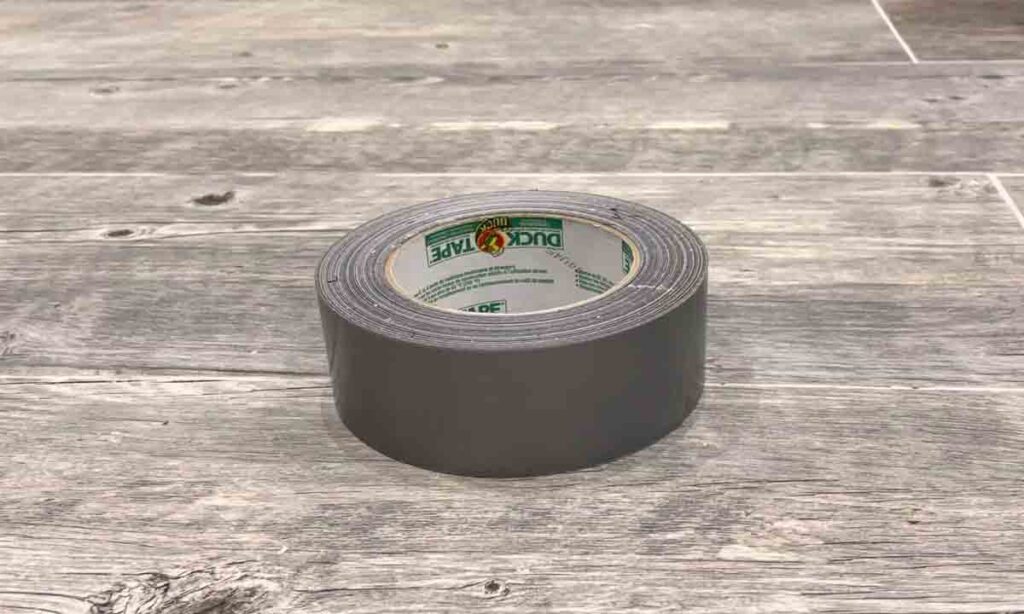
Read Also 5 Top-rated Spray Adhesive for Vinyl Flooring – Unveiling the Best Choices in 2024
Types Of Duct Tape
- True duct tape
- Gaffer Tape
- Stucco Tape
- Electrical Tapes
- General-purpose
- Industrial grade
- 3M Duct Tape
- Color Duck Tape
What Is Duct Tape Used For?
From quick fixes on pipes and tents to crafting wallets and costumes, it’s the go-to adhesive for all kinds of repairs and creative projects. Truly, it’s the sticky savior of the household and crafting world!
Why Is Duct Tape So Strong?
A sturdy fabric backing that gives it muscle. This unique construction grants it unparalleled strength, making it the go-to fix for countless challenges.
Is It Called Duck Tape Or Duct Tape?
It’s called both! Originally “duck tape” because of its water-resistant nature. Later, “duct tape” emerged due to its use on heating ducts. So, whether you’re fixing a duck or a duct, this tape’s got you covered!
Does Duct Tape Stick To Plastic?
Absolutely! Duct tape is fantastic for sticking to many surfaces, including plastic. Just make sure the plastic surface is clean and dry for the best adhesion.
Is Duct Tape Safe On The Skin?
While duct tape might be a handy fix for many things, it’s not the best choice for skin. Using it directly can irritate or even damage your skin. Always opt for medical tapes or bandages designed for skin safety!
Is Duct Tape Stronger Than Tape?
Duct tape is like the superhero of tapes. It’s thicker, stickier, and can handle tougher tasks than regular tape. So, when it comes to strength, duct tape often wins the battle hands down.
Is The Duct Tape Waterproof?
Yes, duct tape is waterproof. It’s designed to adhere well and resist moisture, making it suitable for various repairs, including those in damp or wet conditions.
Is Duct Tape Safe For Food?
No, duct tape is not safe for food. It’s designed for repairs and is not meant to come into contact with food. Always use materials approved for food handling and storage.
Is Duct Tape Flammable?
Yes, duct tape is flammable. When exposed to flames or high temperatures, it can catch fire. It’s essential to use it safely and keep it away from open flames or heat sources.
Who Made Duct Tape?
Duct tape was invented by Vesta Stoudt. She wanted a strong tape for ammo boxes during World War II. Her idea led to the creation of duct tape, a versatile adhesive that’s become a household essential.
How Long Will Duct Tape Last?
Duct tape can last for a long time, even years, if stored properly. However, its durability can vary based on usage, exposure to elements, and quality of the tape.
Is Duct Tape Heat Proof?
No, duct tape is not heat-proof. If exposed to high temperatures, it can melt or lose its adhesive strength. Always use appropriate materials designed for heat resistance in situations involving extreme temperatures.
How Thick Is Duct Tape?
Duct tape is commonly available in various thicknesses. The measurement you provided, “10.7 mil,” refers to the thickness of one specific type of duct tape. “Mil” is a unit of measurement equal to one-thousandth of an inch. Thus, 10.7 mil would be 0.0107 inches thick.
What Is The Difference Between Duct Tape And Normal Tape?
Duct tape, also known as duck tape, is a strong, fabric-based adhesive tape with a waterproof backing. It is designed for durable, long-lasting applications and can adhere to a variety of surfaces. Normal tape, often made of plastic or paper, is generally thinner and less durable, suitable for lighter tasks and temporary fixes.
How To Use Duct Tape?
Here’s a guide on how to use duct tape effectively:
1. Prepare the Surface
Before applying duct tape, make sure the surface is clean, dry, and free from dust or oil. Wipe it down with a clean cloth if necessary.
2. Tear or Cut
Duct tape can be torn by hand, but for more precise cuts, use scissors or a utility knife. Always cut or tear with a slight overlap for a better seal.
3. Apply Evenly
Press the tape firmly onto the surface, smoothing it out to avoid air bubbles or wrinkles. Make sure it adheres well to all edges.
4. Use in Layers
For added strength or to cover a larger area, apply multiple layers of duct tape. Press each layer firmly onto the previous one.
5. Repair and Patch
Duct tape is excellent for temporary repairs, such as patching a hole in a tent, fixing a broken strap, or sealing a leaky pipe.
How Do I Choose The Best Duct Tape?
Here are some factors to consider when selecting duct tape:
1. Purpose of Use
Determine the primary use for the duct tape. Will it be used for general repairs, heavy-duty tasks, waterproofing, or temporary fixes?
2. Adhesion Strength
Some duct tapes have stronger adhesives than others. For heavy-duty applications or materials that are difficult to bond, choose a tape with high adhesion strength.
3. Durability
Consider how long you need the duct tape to hold up.
4. Flexibility and Conformability
Depending on the surfaces you are working with, you may need a duct tape that can conform to irregular shapes or surfaces.
5. Waterproofing
If you require a duct tape that can provide a waterproof seal, choose tapes that are specifically designed for this purpose. These tapes often have a waterproof backing and a strong adhesive to prevent water penetration.
6. UV Resistance
For outdoor applications, select a duct tape that is UV-resistant to prevent degradation and discoloration from prolonged exposure to sunlight.
7. Temperature Resistance
Ensure that the duct tape you choose can withstand the specific temperature range without losing its adhesive properties
FAQs
Is HVAC tape the same as duct tape?
No, HVAC tape and duct tape differ. HVAC tape, often aluminum foil with acrylic adhesive, is designed for HVAC systems, providing durability and airtight seals. Duct tape is a general-purpose cloth-backed tape.
What tape is used for HVAC?
HVAC tape, specifically designed for heating, ventilation, and air conditioning systems, is commonly made of aluminum foil with an acrylic adhesive. It ensures effective sealing of joints and seams in ductwork.
What is HVAC tape called?
HVAC tape is also known as foil tape or aluminum tape. It is recognized for its application in HVAC systems, offering heat resistance, reflectivity, and the ability to create a strong, airtight bond.
What is the alternative to HVAC tape?
An alternative to HVAC tape could be mastic or duct sealant. These are paste-like substances used to seal joints and gaps in ductwork. While not a tape, they serve a similar purpose in HVAC applications.
Did Astronauts Use Duct Tape?
Yes, astronauts have used duct tape in space missions for various purposes, including repairs. Its versatility and adhesiveness make it a useful tool in microgravity environments.
What is class 3 duct?
A Class 3 duct refers to ductwork with a specific thickness for certain applications. Duct tape is a versatile adhesive tape, commonly used for sealing and repairs.
What are the three types of ducts in HVAC?
The three types of HVAC ducts are rigid, flexible, and semi-rigid. Each serves specific purposes and is chosen based on installation requirements and efficiency.
Is HVAC foil tape flammable?
HVAC foil tape is typically made of aluminum and has a flame-resistant adhesive. While it can burn, it generally has a high resistance to flames.
Can duct tape be used for HVAC repairs?
No, duct tape is not suitable for HVAC repairs. It can degrade and is not designed to withstand the temperature and pressure differences associated with HVAC systems.
Is duck duct tape UV-resistant?
Yes, duck duct tape is UV-resistant.
Conclusion
The debate of HVAC tape vs duct tape is a never-ending story. HVAC tape and duct tape may look similar, but they serve different purposes. HVAC tape is specifically designed for heating, ventilation, and air conditioning systems, offering resistance to temperature fluctuations and ensuring airtight seals.
Duct tape, while versatile, may not withstand extreme HVAC conditions. For optimal results in HVAC applications, using the right tape is crucial for durability and performance.


